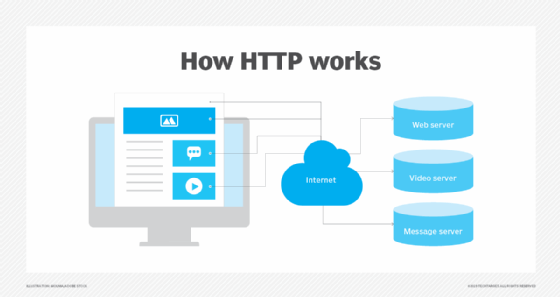HTTP and HTTPS Protocols

Hypertext Transfer Protocol (HTTP)
HTTP is the language used to communicate between web browsers and servers developed by Tim Berners-Lee in 1989. It is the foundation of data communication for the World Wide Web. HTTP functions as a request-response protocol in the client-serving computing model. For example, a web browser may be the client and an application hosting a website may be the server. HTTP is a client-server protocol meaning that requests are sent by one entity, the user-agent, which is usually the web browser. A user-agent is any tool that acts on behalf of the user.
The image to the right provides a basic illustration of how HTTP works.
Hypertext Transfer Protocol Secure (HTTPS)

HTTPS is an extension of HTTP used for secure communication over a computer network and is used widely on the internet. The communication protocl is encrypted using Transport Layer Security (TLS) or Secure Sockets Layer (SSL). HTTPS allows for authentication of an accessed website, where exchanged data in transit remains protected. It protects against cyber attacks. Web browsers are aware of which HTTPS websites to trust based on certificate authorities within software. Companies such as banks, e-commerce, and any website that require you to put in personal information, such as log in username and password, all user HTTPS to keep their users information protected.
The image to the right provides an illustration of the difference between HTTP and HTTPS. When a website is secure, you will see a lock next to HTTPS.